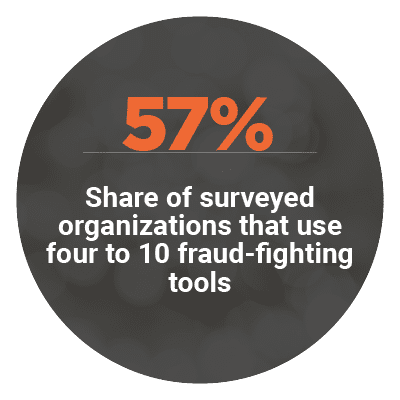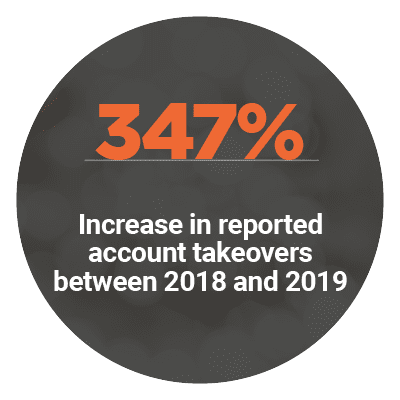
More consumers are turning to the omnichannel offerings of banks and credit unions (CUs) as they follow stay-at-home mandates, and cybercriminals are eager to launch attacks that make use of these channels. Account takeovers (ATOs) rose 347 percent from 2018 to 2019 — a problem that will only worsen if financial institutions (FIs) are not vigilant.
Fraudsters seek to fly under the radar by stealing information through one channel that they then use to execute ATOs or other attacks. Bad actors may dial into call centers and pretend to be legitimate customers to trick staff into revealing details about the individuals, which could then be used to figure out the victims’ digital banking  logins. Fraudsters equipped with such information could then easily access victims’ online accounts using legitimate credentials and take control of the customers’ funds. Criminals making such attacks hope that FIs will fail to realize that contact center staff reports of suspicious callers should prompt closer monitoring of other channels, such as online and mobile banking.
logins. Fraudsters equipped with such information could then easily access victims’ online accounts using legitimate credentials and take control of the customers’ funds. Criminals making such attacks hope that FIs will fail to realize that contact center staff reports of suspicious callers should prompt closer monitoring of other channels, such as online and mobile banking.
The May FI Fraud Decisioning Playbook examines the issue of omnichannel fraud and the strategies that banks and CUs are using to detect and thwart it.
Around The FI Fraud Decisioning World
Cross-channel fraud is a major threat, and FIs need to quickly detect if it is occurring. That includes catching when data stolen via one banking channel is being used to enable ATOs in other channels, according to Daniel Cohen, head of anti-fraud products and strategy at risk management solutions provider RSA. Otherwise, the fraud could continue unnoticed.
Many retailers have shifted to offering curbside pickup and delivery services during the COVID-19 pandemic and are seeing an upswell of  card-not-present (CNP) transactions to pay for these. That makes it critical that the merchants enact strong protections against CNP payments fraud. Tapping both artificial intelligence (AI) and risk engine solutions can help merchants catch such crimes, says Carleigh Jaques, senior vice president and general manager of payment processing and fraud management platform provider CyberSource, in a recent interview with PYMNTS.
card-not-present (CNP) transactions to pay for these. That makes it critical that the merchants enact strong protections against CNP payments fraud. Tapping both artificial intelligence (AI) and risk engine solutions can help merchants catch such crimes, says Carleigh Jaques, senior vice president and general manager of payment processing and fraud management platform provider CyberSource, in a recent interview with PYMNTS.
FIs can also help in the fight against CNP fraud. Banks that detect suspicious-seeming transactions can quickly message cardholders to discover whether or not they intended to make the purchases. Then the FIs can let any transactions that customers approved clear while blocking the rest, thus enabling tight security with few false positives, explains Mitch Pangretic, senior vice president of strategic partnerships at financial services company Elan, in an interview.
To find more about these and the rest of the latest headlines, download the Playbook.
How UMB Strategizes For Omnichannel Fraud-Fighting
FIs are continually adding new channels through which customers can access their services, and they need to be ready to detect fraudsters who try to exploit those access points. Keeping channels secure and convenient requires FIs to be able to detect and thwart fraud, without accidentally sweeping up legitimate customers. In this month’s Feature Story, Uma Wilson, executive vice president and director of treasury management, card and bank product UMB Bank, explains analyzing customers’ behaviors across channels to detect unusual activity.
Read the full story in the Playbook.
Deep Dive: Why Banks Must Examine Customer Behaviors Across Channels
Banks that rely on only examining each channel individually can easily miss fraud schemes that span across multiple. FIs must re-strategize to catch these complicated crimes and can use centralized fraud-fighting systems to power these efforts. They can also deploy tools like link analysis that help them establish connections between seemingly different fraud events. This month’s Deep Dive examines how fraudsters use multiple channels to conduct subtle schemes and the strategies FIs can use to detect and combat them.
Get the scoop in the Playbook.
About The Playbook
The FI Fraud Decisioning Playbook, a PYMNTS and Simility collaboration, examines how understanding legitimate customers’ behaviors can help banks spot and eliminate malicious activities.